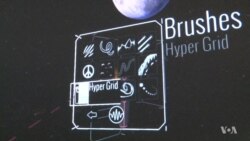Virtual reality, or VR, has exploded onto the consumer market this year. While people can watch short VR content and even play games in VR, consumers who want to watch a fully immersive, full-length movie in virtual reality will have to wait.
There are a couple of reasons why full-length VR films are problematic, according to Lucas Wilson, Supersphere VR founder and executive producer.
First, viewing technology is still in its infancy.
"Just looking through those lenses, looking through those optics, for more than about 15 or 20 minutes, you start to feel the eyestrain, so you need to take a break," he said.
Wilson said making virtual reality content is expensive, and companies are just beginning to figure out how to get consumers to pay for it. But virtual reality does have the attention of Hollywood.
"Every director I talk to, every creative I talk to, wants to do virtual reality because it's new. It's new, and it's cool," Wilson said.
Directors will have to think outside the box if they want to produce a full-length film in virtual reality, because VR viewers have the freedom to look anywhere.
"I don't think anyone knows if storytelling is appropriate yet,” said Dave Van Hoy of Advanced Systems Group, which focuses on technology and engineering for media and entertainment. “I think that until some attempts are made, and we find out what the consumers want to watch, I don't think we'll know,"
Wilson said a 360-degree canvas allows directors more artistic freedom.
"It actually enhances creative ability, if you want to look at it that way,” he said. “They are not limited by a 16-by-9 frame anymore. What happens is, maybe for the first 10 or 15 seconds when someone puts on a VR headset … they're looking all over the place, but then after a while, they focus because that's how you're physiologically wired."
While traditional filmmaking techniques such as lighting and framing are still relevant, there is the additional tool of using high-tech sound technology, such as Dolby Atmos, to tell the story.
"If you are in a headset, and there's a sound that happens behind you, a loud sound that happens behind you … you have to turn around,” he said. “So, that all of a sudden whips your focus somewhere else in the frame and that can be a storytelling technique."
A storyteller's goal is to communicate emotion and connect with the audience.
The best way to achieve that, Wilson says, is to immerse viewers in that environment. With virtual reality, that is now possible.












